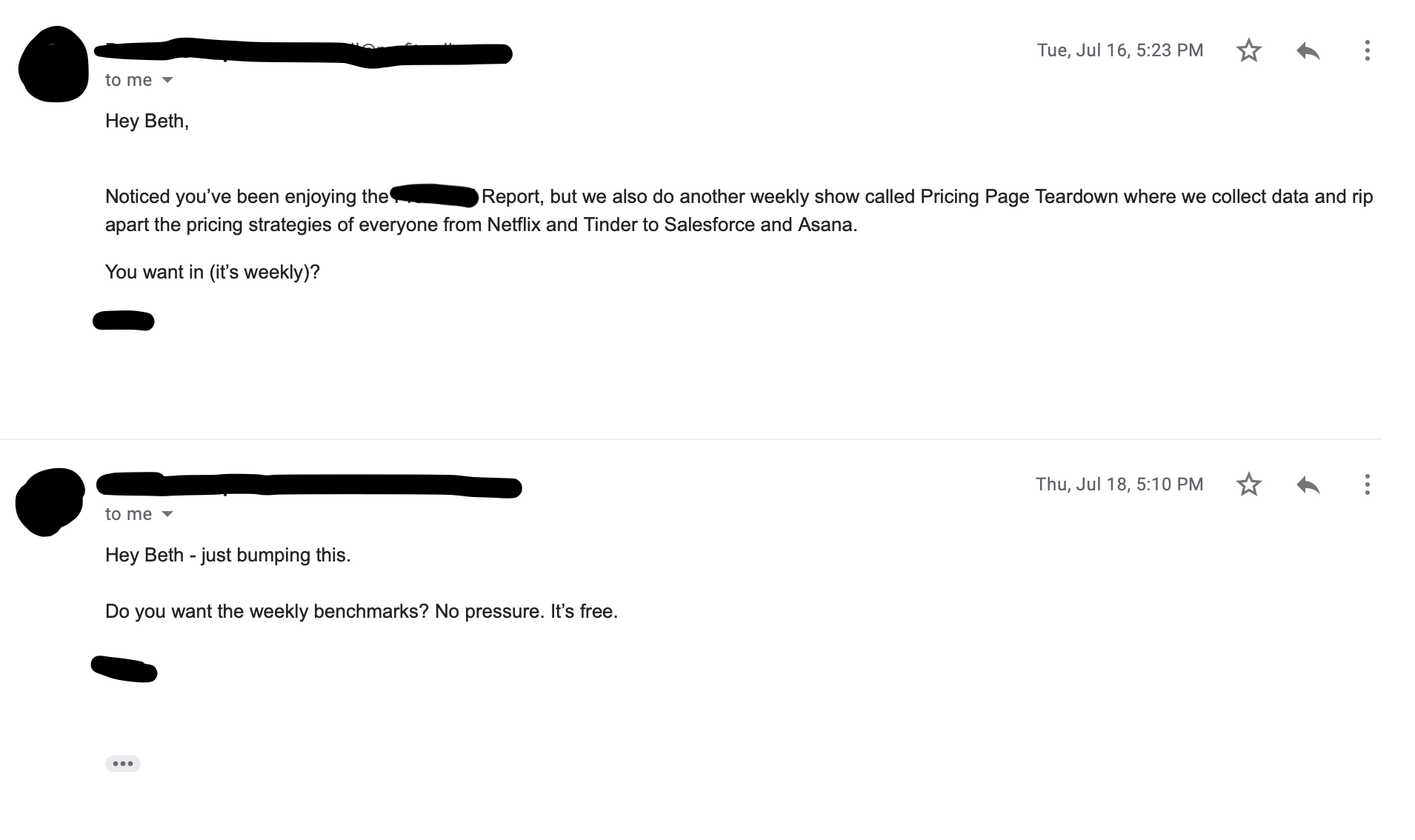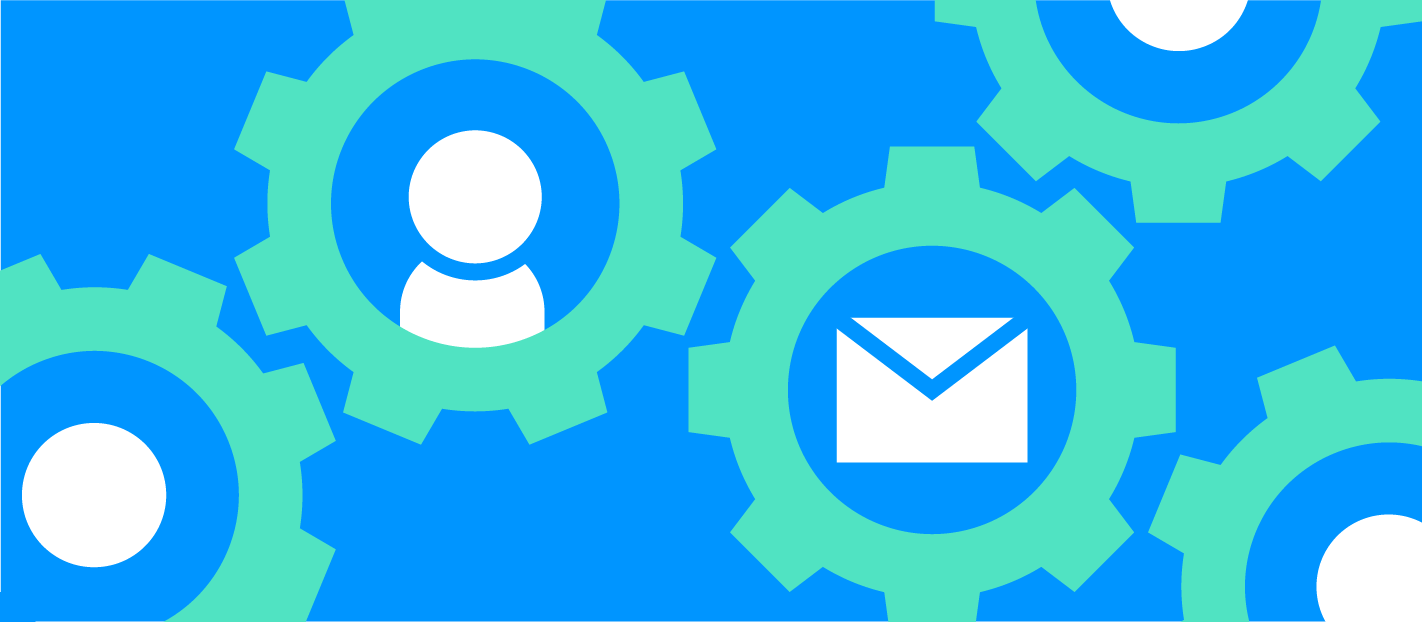GoSquared helps companies master their data to get closer to their customers and grow their business faster. We specialise in data-backed marketing and our suite of tools range from Analytics, to Live Chat, to Automation. We’d love to help you out.

We can’t be the only ones who’ve noticed an influx of automated plain-text emails from brands and businesses.
The trend consists of little-to-no design (plain-text) and a very personal tone. Whilst we can appreciate the efficiency of a quick no-frills email – it feels strange somehow.
We started discussing this back at the start of July.

After sharing a few examples and chat ranging from “should we be doing this too?” to “it’s just at the point where you question it” and through to “you feel so conned, right?” we checked out the original emails and sure enough they were all sent using an email marketing tool.
A few weeks later we noticed one of these plain-text emails had an added signature. It seems we weren’t the only ones confused as to whether these emails were legit or not.

This uncertainty of whether these are coming from an individual or an automated account is what makes these plain-text emails so frustrating.
Mass email isn’t personal
There’s nothing authentic or human about mass email. But that doens’t mean there’s anything wrong with mass email in the right context and the right consideration (we’ll get into those later).
Pretending that mass email is personal will start to undermine the hard work you’ve put in to make your brand feel authentic.
Be honest about it. Be upfront about it. You aren’t emailing me specifically so don’t write in a way that’s trying to come across as a one-to-one conversion.
I’m not convinced you’re emailing me directly, but I’m confused enough to question if you are.
This is not the way to start a relationship with a new customer.
After this we started to compare this feeling to the Uncanny Valley.
Uncanny Valley is what people call that unsettled feeling you get when you see a robot that looks very human-like, but not quite enough to be convincing. And that description fits these emails perfectly.
Human-like, but not quite enough to be convincing
Is this from a person? Is this automated? Am I meant to reply? Do I reply as if the recipient is a bot or a human? These emails sit awkwardly in a social space that you’re not sure how to handle.
Be careful about damaging existing relationships

The unsettling feeling is even worse when you’ve met the person sending the emails because that in-person social connection you felt you had disappears when it seems you’re just another name on an impersonal mailing list.
The act of questioning whether the email is sent directly to you, or to you amongst many others, is what spurs this reaction.
How you manage this will depend on how your company works with customers or clients. The more personal a relationship the more damage your plain-text marketing emails could have. When someone has met you and exchanged emails they’ll be able to tell quicker than most when it’s a mass email disguised as personal.
Not all plain-text emails are created equal
Sometimes they really are an efficient, surprising way to capture the readers attention and get communications out of the door without needing a designer and to fiddle about with templates.
We’ve spoken about how they can be a useful part of a sales-funnel before and stand by that. But without getting the tone and style right you might leave your recipients more confused and less engaged than they were before the email.
Something like the below example from Hiten Shah gets it right. The tone is the same as he uses across all his content. It’s clear these emails are going to thousands, but the plain design still does its job of making the reader look twice before skipping on or hitting delete.

So how can we be more transparent?

It’s impractical to suggest that every single customer, newsletter subscriber, and audience member should receive an entirely personalised email.
We’re not going to suggest that you spend every waking hour writing truly personalised emails. But, we are going to give a few tips on how to use plain text emails in a way that feels authentic and trustworthy.
Be honest and be clear

We believe the best way forward is to make sure your recipient knows that this is a mass-email. like the above example you can still have a real person on the other end to get any replies, but make sure they know it’s automated.
You can write in a friendly and casual tone without being over-familiar. Keep your style consistent with the rest of your copy on your site instead of turning to how you might normally speak one to one. Friendly, colloquial language is great if that suits your business, but make sure it’s clear that this isn’t written for an individual, even if you are using mail merge to show their name at the top of the email.
Keep it simple. Be clear when you’re sending a marketing email, and be clear when you’re sending a personal email. It doesn’t have to be complicated. It does have to be clear.
That clarity is important to build trust and not have people questioning your brand’s authenticity. No one wants to feel like they’ve been duped by a marketing bot.
Think about your audience

The tech-savvy amongst us were (fairly) quick to see that these were automated emails designed to look personal. But what if your mum received this? Your granddad? Or just anyone who is less familiar with marketing automation tools?
How much time would they spend trying to remember where they know the sender from and writing out a polite reply?
Would your audience react kindly to an automated marketing email, or are your services and products not suitable for that kind of communication?
Don’t rely on the receiver thinking that it’s a personalised email if your company prides itself on a personal touch. A customer who sees through this will likely have a more negative reaction than if they hadn’t received anything at all.
Consider data protection regulations

These rules will vary depending on the region you’re in and where you’re sending the emails to. It’s worth checking what the regulations are regarding communications coming from a company. Not only do regualators care more about privacy and data protection, but the public do too.
Here are a couple of things to think about:
- Are you required to disclose that the email is part of a marketing funnel?
- Are you required to offer an unsubscribe link?
- How does someone opt out if they want to?
- Do you need to include details about the company? (address, company number)
How can we still get that personal feel?
Use data to segment your audience

Data can upgrade your marketing strategy in a number of ways. The most effective in this case is in using data to help segment your audience and personalise email campaigns.
Data can get you answers to questions without having to ask for them. Data can help add colour to the profile of a new customer and allows you to tailor messaging for an audience segment.
Use data to find the right way to speak to each of your customer groups, to talk about the right topics at the right times, and increase your conversion rate.
Use automated email to target specific audience segments

Automated email is an essential tool for targeting groups of customers with personalised communications. Email automation tools will have been used to send out the examples we touched on in this post and probably every email you’ve ever received from a brand, including our own newsletter.
You can trigger emails to send after any action (or inaction) that you choose, tailoring your messaging to an audience, action, and the specific moment in the customer journey. This kind of targeted personalisation is better for everyone – you see more impact, and your customers only receive communications relevant to them.
Use data to perfect your customer journey

Knowledge is power. We’ve all heard the quote before, but implementing this into our business practice is a different story altogether.
When we start designing customer journeys we are basing a lot of our work on knowledge from sources outside of our business: marketing reports, data sets from other companies…
What a lot of businesses fail to do is edit these customer journeys as they acquire their own data about specific actions and pathways their customers choose to take. You can get a good starting customer journey from alternative data, but it won’t be anywhere near as effective as using your own data.
Take the knowledge from your analytics dashboard and turn it into something actionable by tailoring your messaging, communications, and journey to your own customers.
If you’re new to sending automated emails, check out our beginner’s guide to email automation.
GoSquared helps companies master their data to get closer to their customers and grow their business faster. We specialise in data-backed marketing and our suite of tools range from Analytics , to Live Chat , to Automation. We’d love to help you out.

